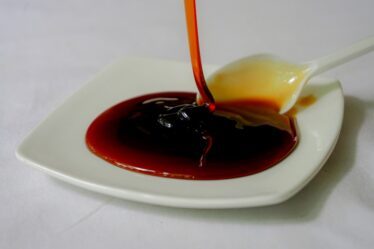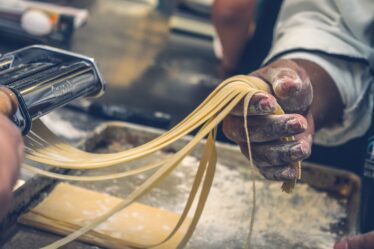
Pickling is an ancient preservation technique that has been used for centuries to extend the shelf life of fruits and vegetables. The process involves immersing the produce in a mixture of vinegar, salt, and spices, which not only helps to preserve the food but also imparts a unique flavor. While pickling was initially developed as a way to preserve food during times of scarcity, it has evolved into a beloved culinary tradition that is still popular today.
The history of pickling can be traced back thousands of years to ancient civilizations such as Mesopotamia and Egypt. These early cultures discovered that by soaking their food in a mixture of vinegar or brine, they could prevent spoilage and enjoy their favorite fruits and vegetables all year round. Pickling was especially important in regions with harsh climates or limited access to fresh produce.
Today, pickling remains popular for several reasons. Firstly, it allows us to enjoy seasonal produce long after it has gone out of season. By pickling fruits and vegetables at their peak freshness, we can savor their flavors throughout the year. Additionally, pickling adds a unique tangy and savory taste to foods that can enhance a variety of dishes. From sandwiches and salads to charcuterie boards and cocktails, pickled ingredients can elevate the flavor profile of any meal.
Key Takeaways
- Pickling is an art that has been around for centuries and involves preserving food in a vinegar or brine solution.
- A good pickling mixture is essential for achieving the desired flavor and texture of your pickled foods.
- Homemade pickling mixtures offer numerous benefits, including the ability to customize flavors and avoid preservatives and additives.
- The basic ingredients of a pickling mixture include vinegar, salt, sugar, and spices, but the secret to a perfect mixture lies in the ratios and types of spices used.
- Customizing your pickling mixture allows you to experiment with different flavors and create unique combinations that suit your taste preferences.
- Some popular variations of pickling mixtures include dill, bread and butter, and spicy pickles.
- Storing your pickling mixture properly is important to ensure its longevity and effectiveness.
- Tips for using your pickling mixture include using fresh produce, sterilizing jars, and allowing enough time for the pickling process to occur.
- Elevate your pickling game by experimenting with different flavors and ratios to create the perfect pickling mixture for your taste buds.
The Importance of a Good Pickling Mixture
When it comes to pickling, the right mixture can make all the difference between a delicious batch of pickles and a disappointing one. The key components of a good pickling mixture are acidity and salt. These two elements work together to create an environment that inhibits the growth of bacteria and other microorganisms that cause spoilage.
Acidity is crucial in pickling because it creates an environment that is inhospitable to bacteria. Vinegar is the most commonly used acid in pickling, as it provides the necessary acidity to preserve the food. The level of acidity in the pickling mixture is measured by its pH value, with a lower pH indicating higher acidity. A pH level of 4.6 or below is considered safe for pickling.
Salt, on the other hand, helps to draw out moisture from the produce, which further inhibits bacterial growth. It also enhances the flavor of the pickles and acts as a natural preservative. The amount of salt used in a pickling mixture can vary depending on personal preference and the type of produce being pickled.
The Benefits of Homemade Pickling Mixtures
While store-bought pickles are readily available, there are several benefits to making your own pickling mixtures at home. Firstly, homemade pickling mixtures are cost-effective. By making your own pickles, you can save money compared to buying pre-packaged options. Additionally, you have the freedom to customize your pickling mixture to suit your taste preferences.
Another advantage of homemade pickling mixtures is that they are healthier than store-bought options. Many commercial pickles contain additives such as artificial colors, flavors, and preservatives. By making your own pickles, you have control over the ingredients and can choose to use organic produce and natural flavorings.
Furthermore, homemade pickling mixtures allow for endless creativity and experimentation. You can try different types of vinegar, spices, and herbs to create unique flavor combinations. This opens up a world of possibilities and allows you to tailor your pickles to your liking.
The Basic Ingredients of a Pickling Mixture
| Ingredient | Amount | Purpose |
|---|---|---|
| Vinegar | 1 cup | Acidifies the mixture and preserves the pickles |
| Water | 1 cup | Dilutes the vinegar and balances the flavor |
| Salt | 2 tablespoons | Enhances flavor and draws out moisture from the vegetables |
| Sugar | 2 tablespoons | Counteracts the sourness of the vinegar and adds sweetness |
| Spices | Varies | Adds flavor and complexity to the pickling mixture |
| Vegetables | Varies | The main ingredient to be pickled |
While there are countless variations of pickling mixtures, there are a few basic ingredients that are essential for any pickle recipe. These include vinegar, salt, sugar, water, and spices or herbs.
Vinegar is the backbone of any pickling mixture as it provides the necessary acidity to preserve the food. White distilled vinegar is the most commonly used type of vinegar for pickling, but other options such as apple cider vinegar, white wine vinegar, and rice vinegar can also be used. Each type of vinegar imparts a slightly different flavor to the pickles, so feel free to experiment and find your favorite.
Salt is another crucial ingredient in pickling as it helps to draw out moisture from the produce and enhances the flavor. Kosher salt or pickling salt is recommended for pickling as they do not contain any additives that can affect the taste or appearance of the pickles.
Sugar is often added to pickling mixtures to balance out the acidity and add a touch of sweetness. The amount of sugar used can vary depending on personal preference and the desired flavor profile of the pickles.
Water is used to dilute the vinegar and create the pickling brine. It is important to use filtered water to ensure that no impurities affect the taste or quality of the pickles.
Finally, spices and herbs are added to the pickling mixture to enhance the flavor and aroma of the pickles. Common spices used in pickling include dill seeds, mustard seeds, coriander seeds, black peppercorns, and red pepper flakes. Fresh herbs such as dill, thyme, and bay leaves can also be added for additional flavor.
The Secret to a Perfect Pickling Mixture
The secret to a perfect pickling mixture lies in finding the right balance of acidity, salt, and sweetness. This balance will not only preserve the food but also create a delicious pickle with a well-rounded flavor profile.
To achieve this balance, it is important to measure the ingredients accurately. Use a kitchen scale or measuring cups and spoons to ensure that you are adding the correct amounts of vinegar, salt, sugar, and water.
The acidity level of your pickling mixture is crucial for preserving the food. As mentioned earlier, a pH level of 4.6 or below is considered safe for pickling. To achieve this level of acidity, it is recommended to use a vinegar with at least 5% acidity. If your vinegar has a lower acidity level, you may need to adjust the amount of vinegar or add an acidifier such as citric acid or lemon juice.
The amount of salt used in a pickling mixture can vary depending on personal preference and the type of produce being pickled. As a general guideline, a ratio of 1 tablespoon of salt per cup of water is commonly used. However, you can adjust the amount of salt to suit your taste.
The sweetness in a pickling mixture helps to balance out the acidity and add depth of flavor. The amount of sugar used can vary depending on personal preference and the desired sweetness level. Start with a small amount and taste the brine as you go, adding more sugar if needed.
How to Customize Your Pickling Mixture

One of the joys of making your own pickling mixtures is the ability to customize them to suit your taste preferences. There are several ways to add your own personal touch to your pickles.
Firstly, you can experiment with different types of vinegar. While white distilled vinegar is the most commonly used type for pickling, other options such as apple cider vinegar, white wine vinegar, and rice vinegar can be used to create unique flavors. Each type of vinegar imparts its own distinct taste to the pickles, so feel free to try different varieties and see which one you prefer.
In addition to vinegar, you can also play around with different spices and herbs. Dill seeds, mustard seeds, coriander seeds, black peppercorns, and red pepper flakes are commonly used in pickling mixtures. However, you can also try adding other spices such as cinnamon sticks, cloves, or star anise for a twist on traditional flavors. Fresh herbs such as dill, thyme, and bay leaves can also be added to enhance the aroma and taste of the pickles.
Furthermore, you can add fruits or vegetables to your pickling mixture to create unique flavor combinations. For example, adding sliced onions or garlic cloves can add a savory kick to your pickles. Adding fruits such as sliced apples or pears can add a touch of sweetness and complexity to the flavor profile. The possibilities are endless, so don’t be afraid to get creative and experiment with different ingredients.
Top Variations of Pickling Mixtures
While there are countless variations of pickling mixtures, here are three popular options to get you started:
1. Classic Dill Pickle Mixture:
– 2 cups white distilled vinegar
– 2 cups water
– 1/4 cup pickling salt
– 2 tablespoons sugar
– 2 tablespoons dill seeds
– 4 cloves garlic, peeled
– 1 teaspoon black peppercorns
Combine vinegar, water, salt, and sugar in a saucepan and bring to a boil. Stir until the salt and sugar are dissolved. Remove from heat and let cool slightly. In sterilized jars, place dill seeds, garlic cloves, and black peppercorns. Pack cucumbers tightly into the jars. Pour the brine over the cucumbers, leaving about 1/2 inch of headspace. Seal the jars and refrigerate for at least 24 hours before enjoying.
2. Spicy Pickling Mixture:
– 2 cups apple cider vinegar
– 2 cups water
– 1/4 cup pickling salt
– 2 tablespoons sugar
– 2 tablespoons red pepper flakes
– 4 cloves garlic, peeled
Combine vinegar, water, salt, sugar, red pepper flakes, and garlic cloves in a saucepan and bring to a boil. Stir until the salt and sugar are dissolved. Remove from heat and let cool slightly. In sterilized jars, place garlic cloves. Pack cucumbers tightly into the jars. Pour the brine over the cucumbers, leaving about 1/2 inch of headspace. Seal the jars and refrigerate for at least 24 hours before enjoying.
3. Sweet and Tangy Pickling Mixture:
– 2 cups white wine vinegar
– 2 cups water
– 1/4 cup pickling salt
– 1/4 cup sugar
– 2 tablespoons mustard seeds
– 2 tablespoons coriander seeds
– 1 teaspoon turmeric powder
Combine vinegar, water, salt, sugar, mustard seeds, coriander seeds, and turmeric powder in a saucepan and bring to a boil. Stir until the salt and sugar are dissolved. Remove from heat and let cool slightly. In sterilized jars, place mustard seeds, coriander seeds, and turmeric powder. Pack cucumbers tightly into the jars. Pour the brine over the cucumbers, leaving about 1/2 inch of headspace. Seal the jars and refrigerate for at least 24 hours before enjoying.
How to Store Your Pickling Mixture
Proper storage techniques are essential to ensure the freshness and longevity of your pickling mixture. Here are some tips to help you store your pickling mixture:
1. Use sterilized jars: Before pouring your pickling mixture into jars, make sure they are properly sterilized to prevent any bacteria or contaminants from affecting the quality of your pickles. To sterilize jars, wash them with hot soapy water and rinse thoroughly. Place them in a pot of boiling water for about 10 minutes or run them through a dishwasher cycle.
2. Seal the jars tightly: Once you have filled the jars with your pickling mixture and vegetables, make sure to seal them tightly. This will create an airtight environment that will help preserve the pickles and prevent spoilage.
3. Store in a cool, dark place: Pickled vegetables should be stored in a cool, dark place such as a pantry or cellar. Avoid storing them in direct sunlight or near sources of heat, as this can affect the quality and flavor of the pickles.
4. Refrigerate after opening: Once you have opened a jar of pickles, it is important to store it in the refrigerator to maintain freshness. Pickles stored in the refrigerator can last for several months.
Tips for Using Your Pickling Mixture
Once you have made your pickling mixture and let your vegetables soak in it, you may be wondering how to use your pickled vegetables in recipes. Here are some tips to help you make the most of your pickles:
1. Enjoy them as a snack: Pickled vegetables make a delicious and healthy snack on their own. Enjoy them straight from the jar or serve them alongside cheese and crackers for a quick and easy appetizer.
2. Add them to sandwiches and burgers: Pickles add a tangy and crunchy element to sandwiches and burgers. Layer them on top of your favorite deli meats or grilled patties for an extra burst of flavor.
3. Incorporate them into salads: Pickled vegetables can add a refreshing and tangy twist to salads. Toss them into green salads, pasta salads, or grain bowls for added texture and flavor.
4. Use them as a topping for tacos and nachos: Pickled vegetables can add a zesty kick to tacos and nachos. Top your favorite Mexican-inspired dishes with pickled onions, jalapenos, or radishes for an extra burst of flavor.
5. Blend them into dressings and sauces: Pickled vegetables can be blended into dressings and sauces to add a tangy and savory element. Try blending pickled cucumbers into a creamy ranch dressing or adding pickled peppers to a spicy salsa.
Final Thoughts: Elevate Your Pickling Game with This Mixture
In conclusion, pickling is an art that has been practiced for centuries and continues to be popular today. The right pickling mixture can make or break your pickling experience, so it is important to find the perfect balance of acidity, salt, and sweetness. Homemade pickling mixtures offer several benefits, including cost-effectiveness, customizability, and healthier options compared to store-bought alternatives.
By experimenting with different types of vinegar, spices, herbs, and additional ingredients, you can create unique flavor combinations that suit your taste preferences. Proper storage techniques will ensure the freshness and longevity of your pickling mixture, allowing you to enjoy your homemade pickles for months to come.
So why not elevate your pickling game by trying out this basic pickling mixture? With a little creativity and experimentation, you can create delicious pickles that will impress your friends and family. Happy pickling!
If you’re a fan of pickling and looking to spice up your homemade pickles, then you’ll definitely want to check out this article on Flavorful Sips. They have a fantastic recipe for a pickling spice mixture that will take your pickles to the next level. Whether you prefer a tangy dill pickle or a spicy jalapeno pickle, this pickling spice mixture is sure to add a burst of flavor. Don’t miss out on this culinary adventure – click here to read the article: https://flavorfulsips.com/savory-soursop-an-unexplored-culinary-adventure/.



